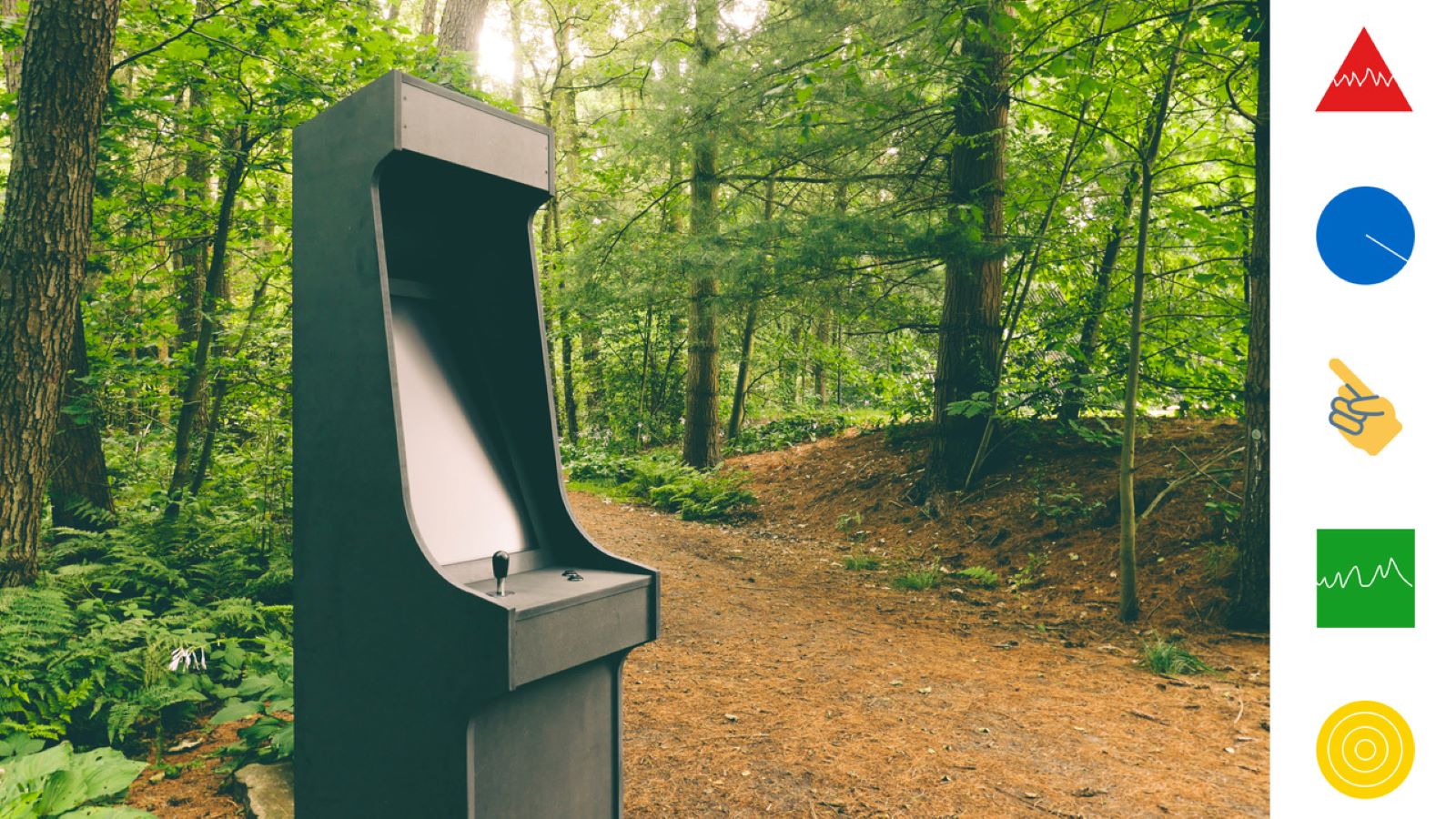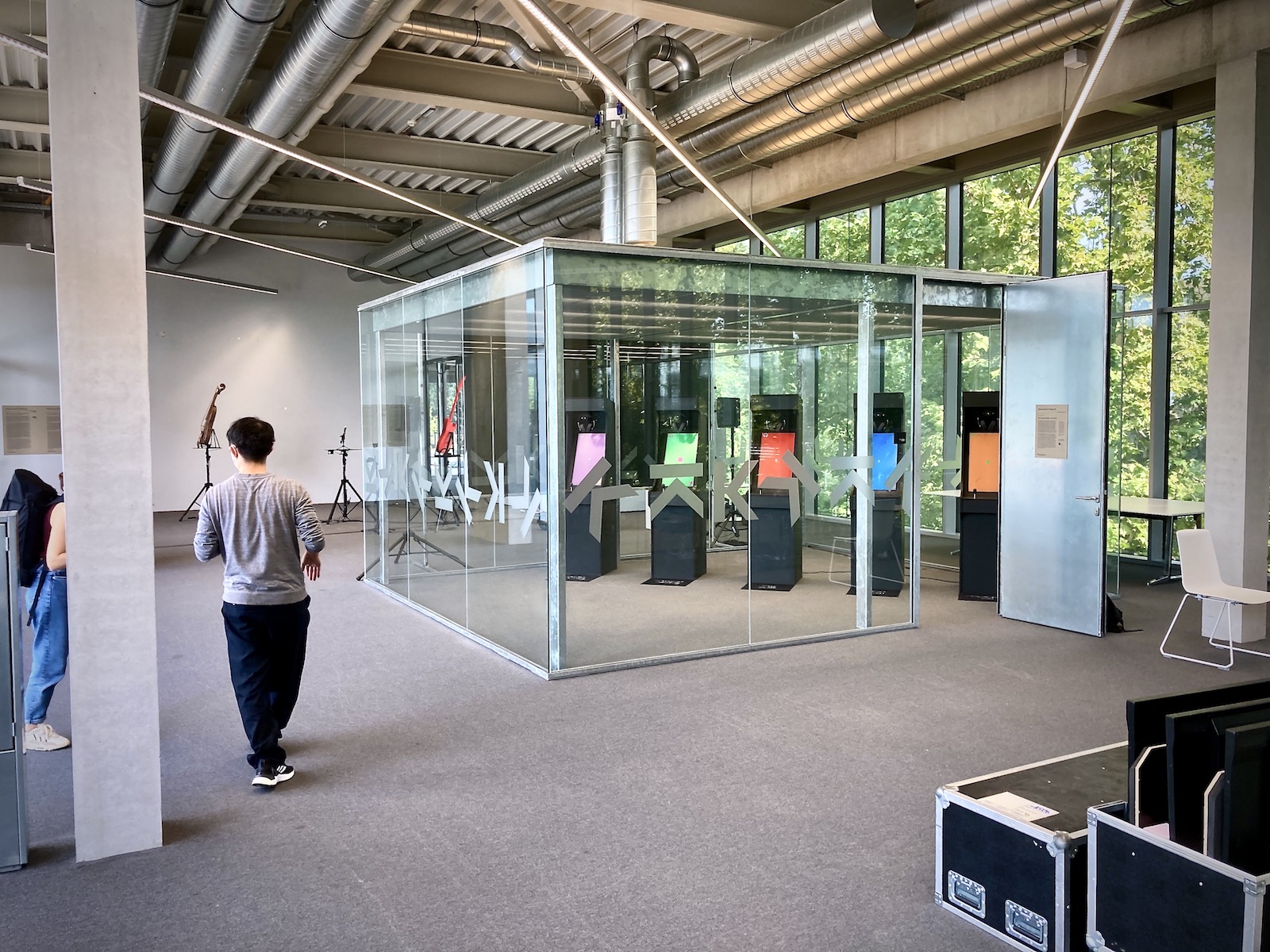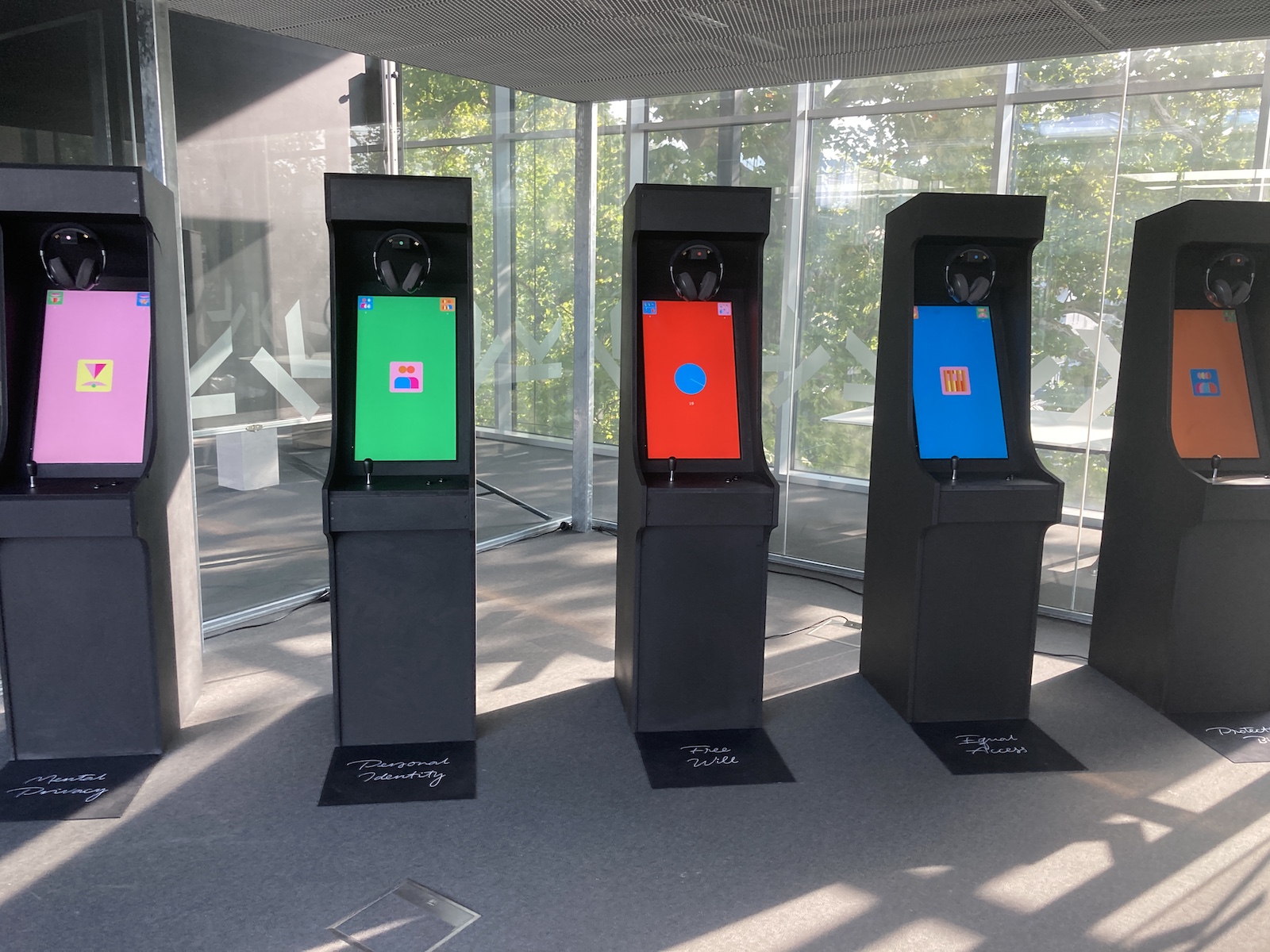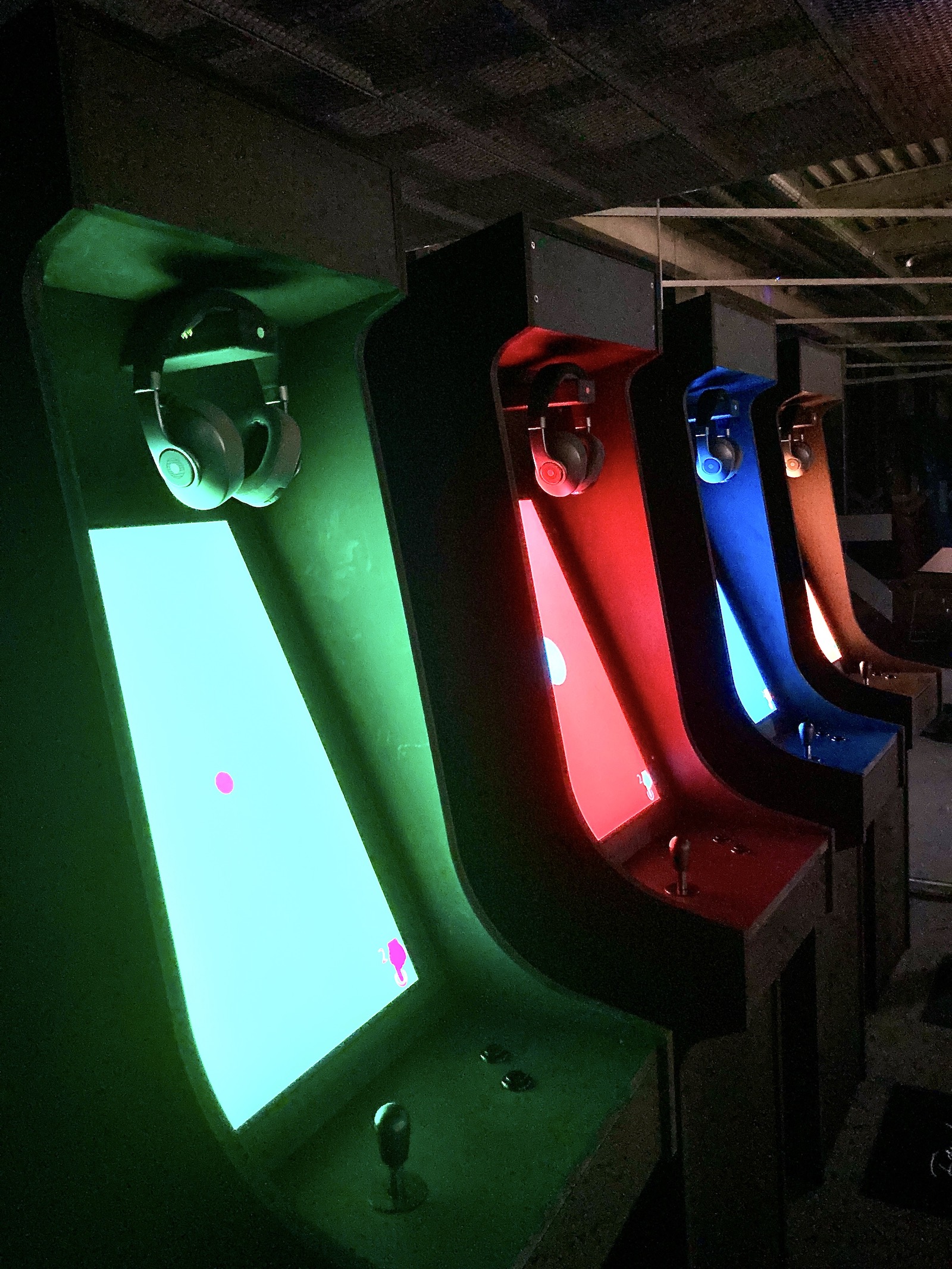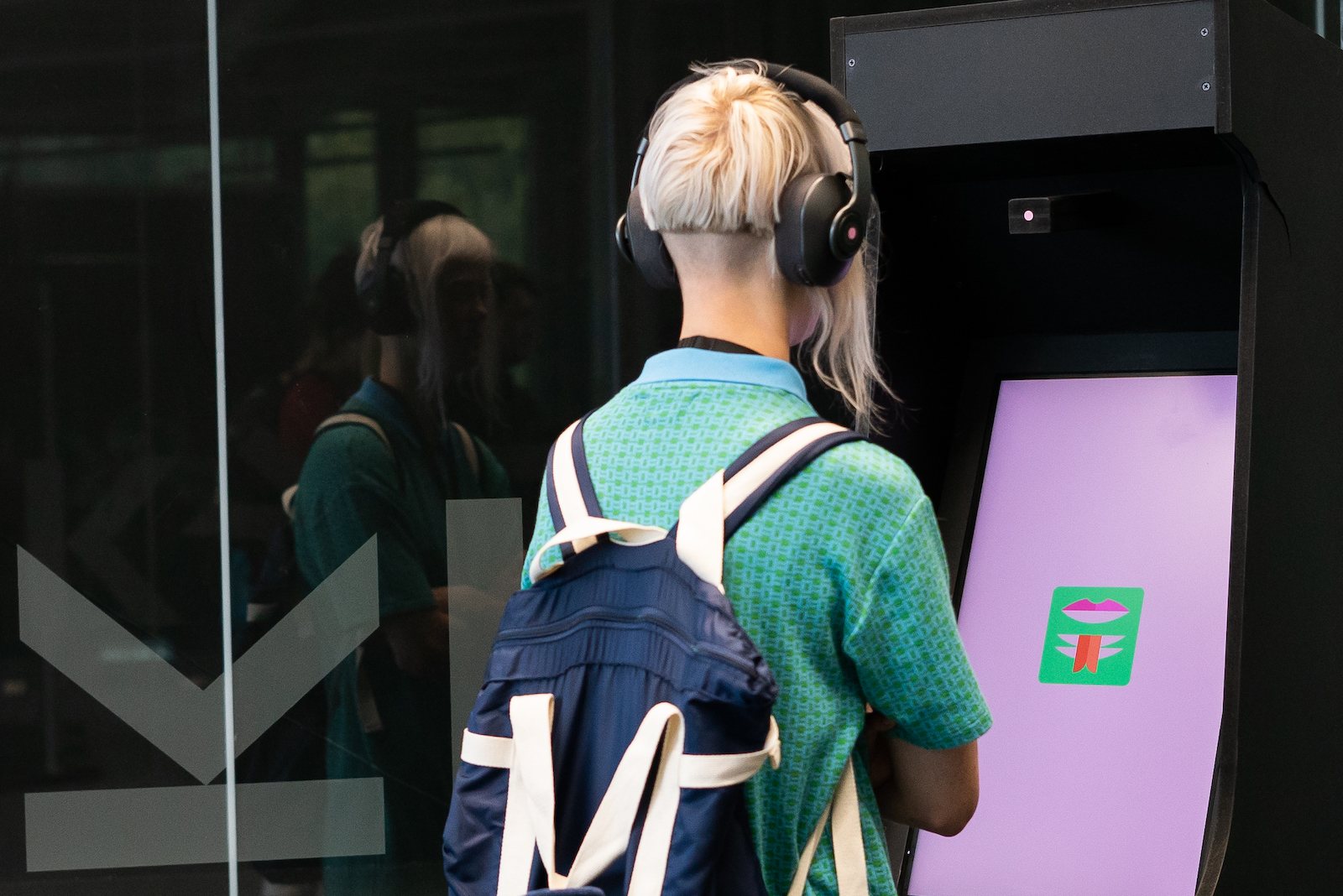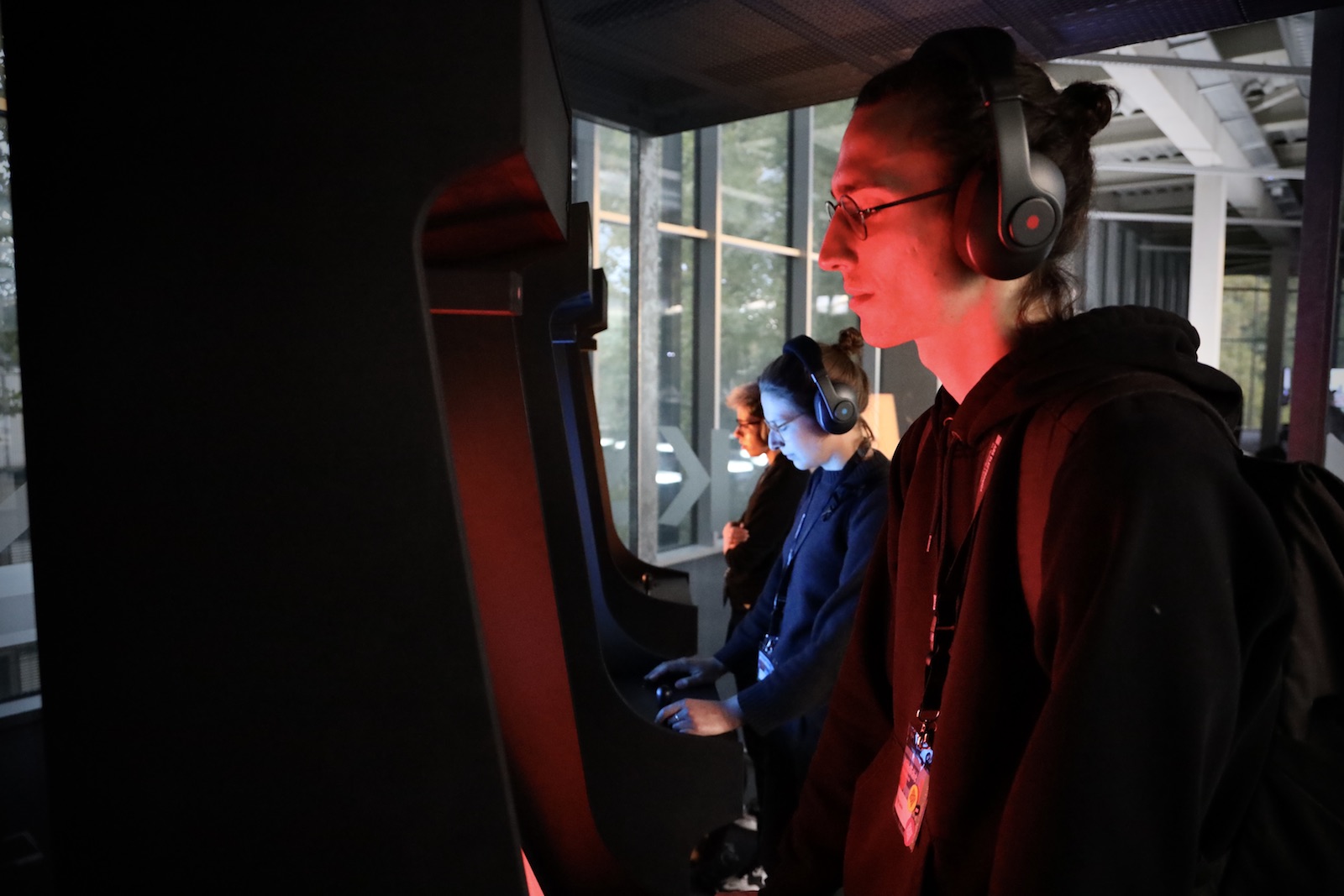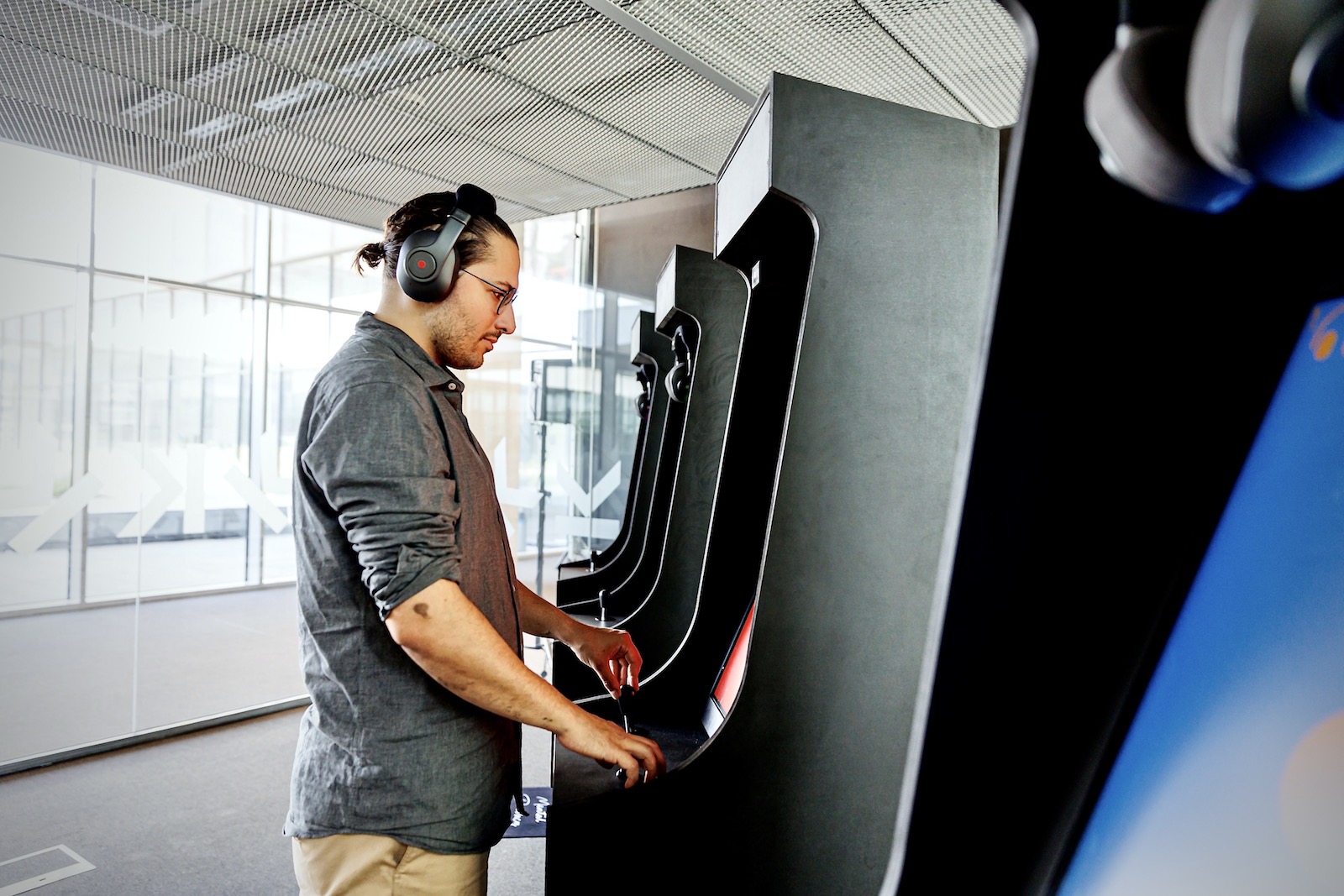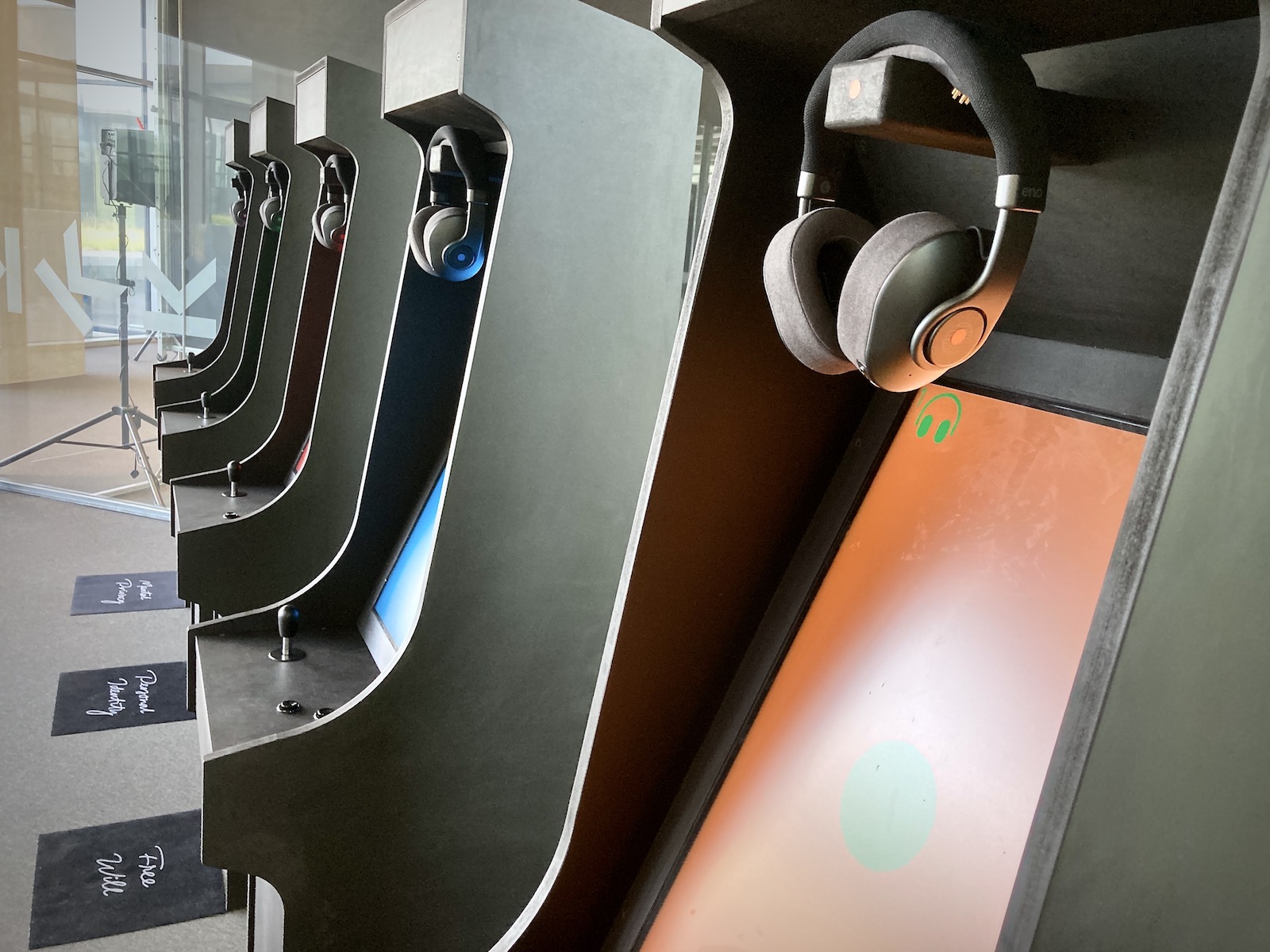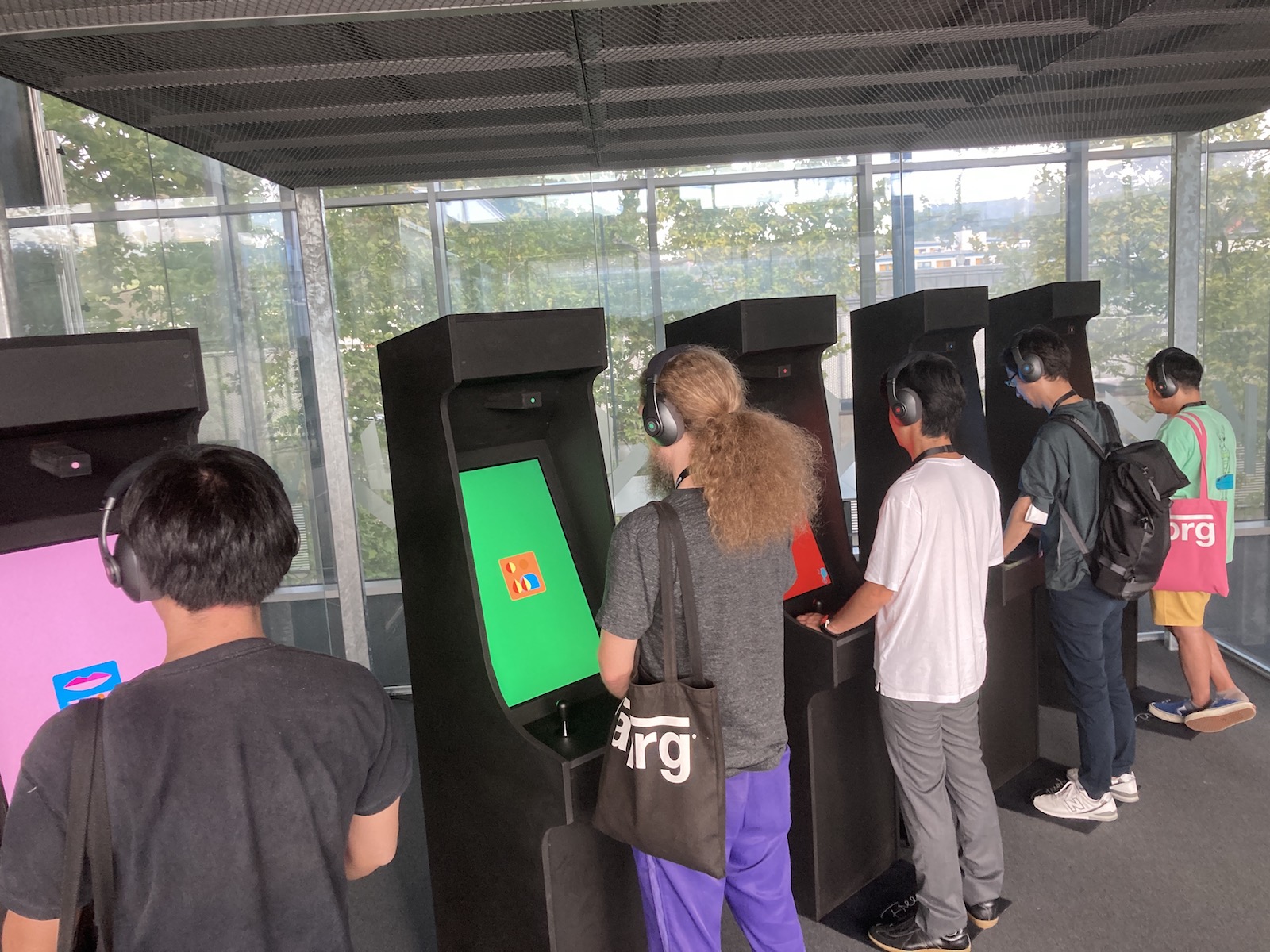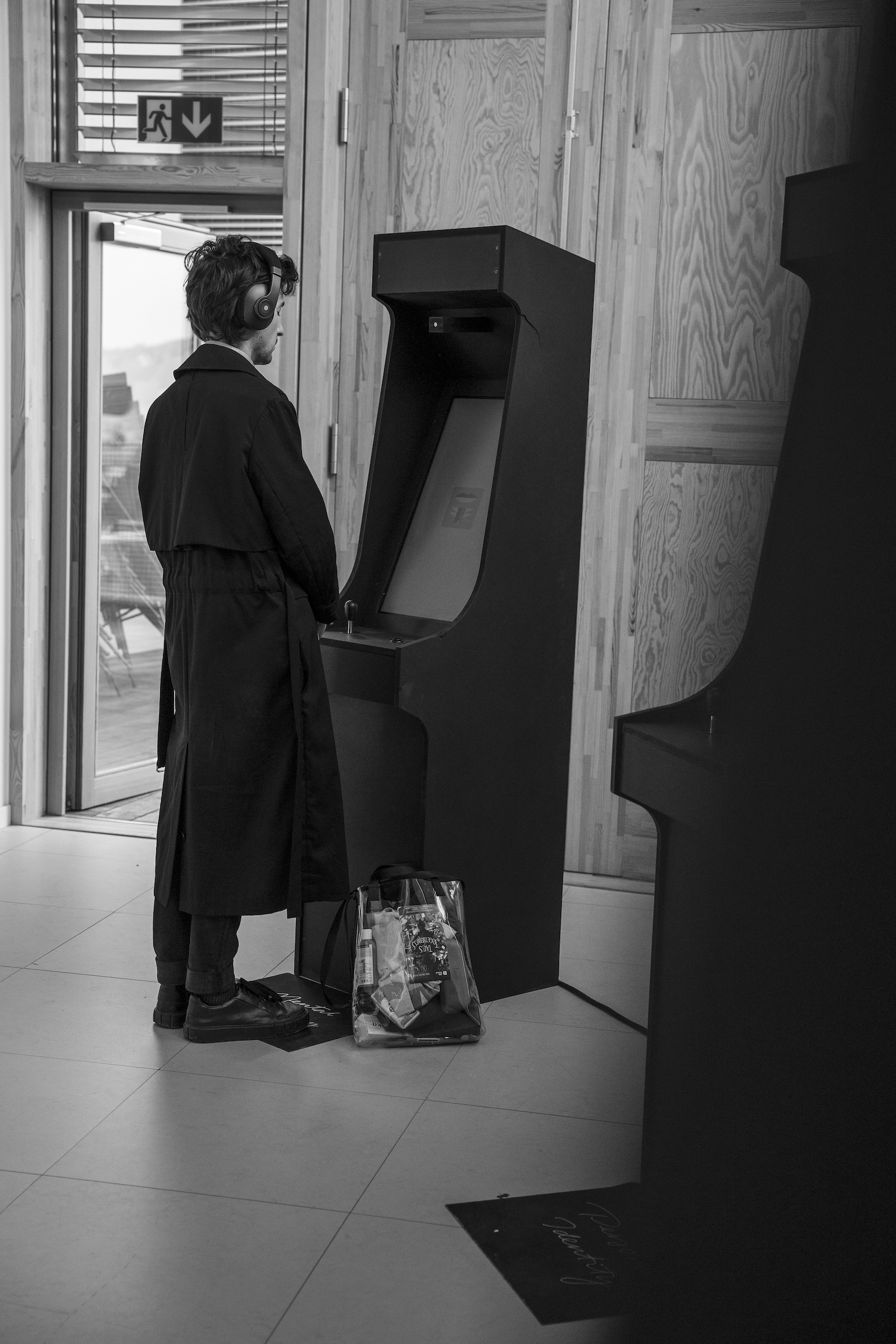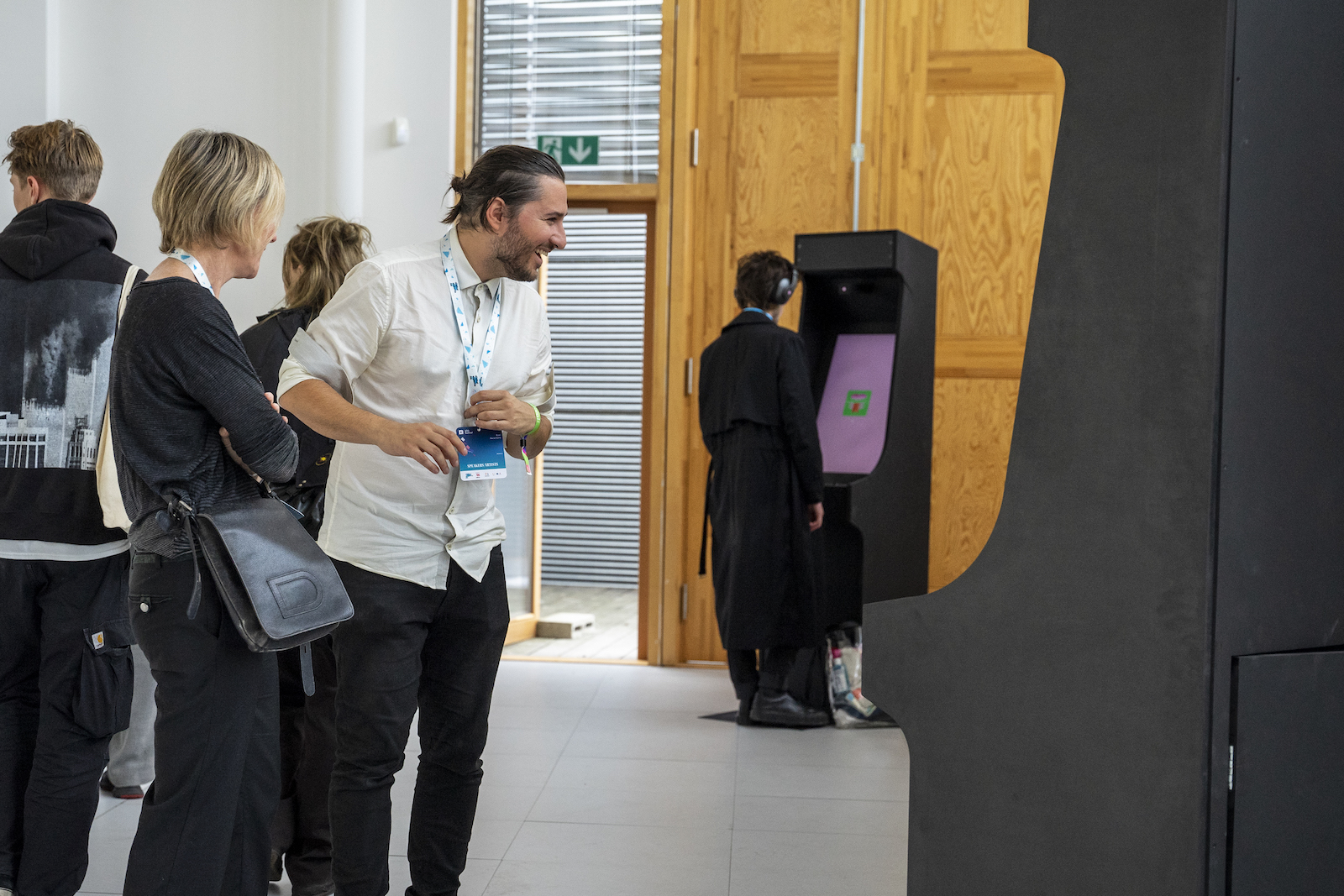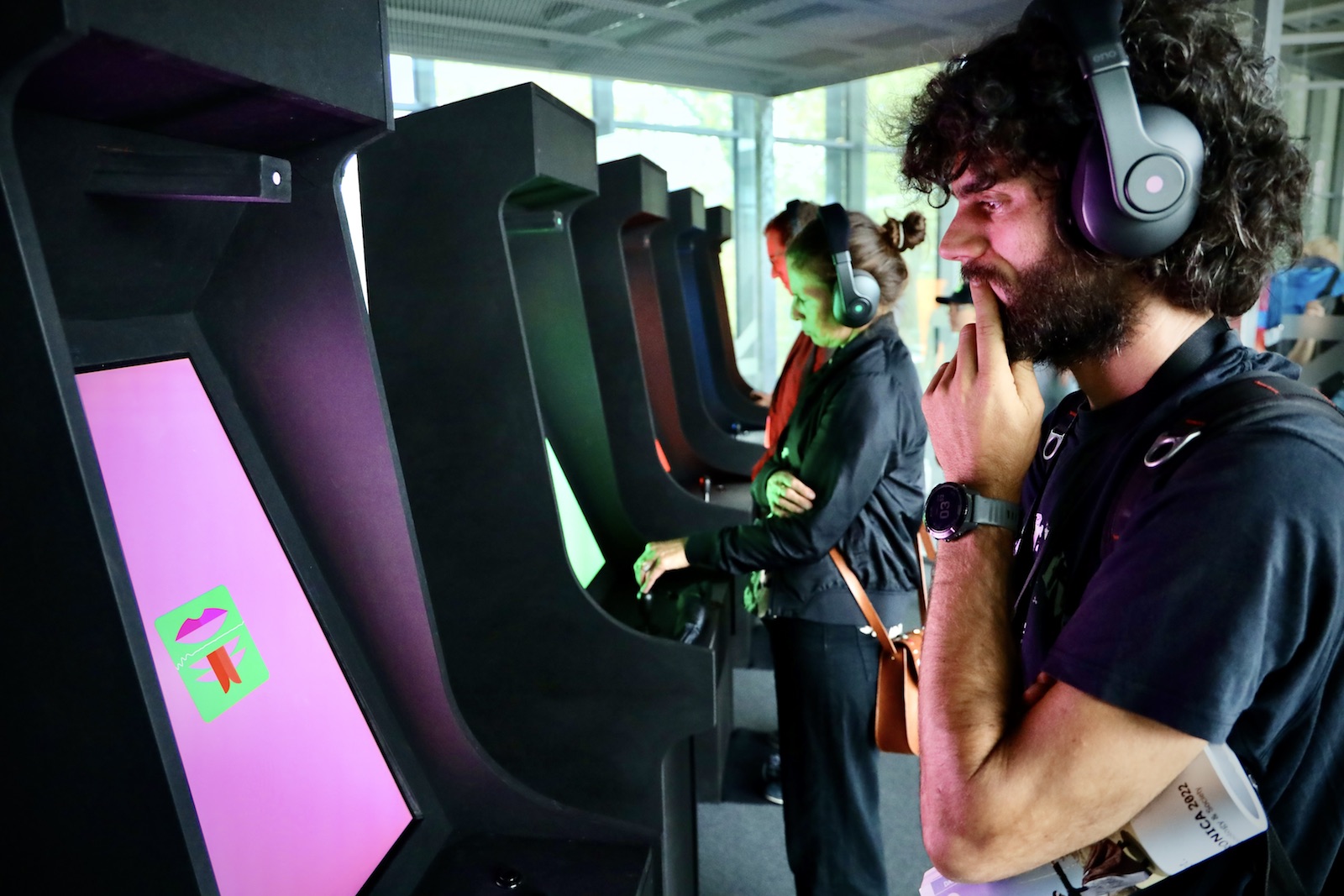The NeuroRight Arcades
Roel Heremans, 2022
Concept & realisation: Roel Heremans
Co-production: C-Takt Pelt, Werktank Leuven, Kunstenwerkplaats Pianofabriek, IKOB,
Erasmus Hogeschool, Ars Electronica Futurelab
With the support of: Flanders State of the Art, Kunstendecreet en Vlaamse Gemeenschapscommissie Brussel
Interactive Design by Tyrell, BCI software by Yuhan Zhang, Thai Duong Truong and Maarten Francq, Neurologial advice by Chie Nakatani and Cees van Leeuwen, Artistic Advice by Emanuele Dainotti and Evan Cole, Arcade Design by Rudi van de Kerkhof
© Photos: Roel Heremans, Quentin Chevrier, Trystan Lothaire, Kat Closon
Previously
2022 - Kepler's Gardens, Linz (Austria)
2022 - KIKK in Town, Namur (Belgium)
2023 - VUB Crosstalks, Brussels (Belgium)
2023 - n0dine, Brussels (Belgium)
2023 - GUM, Ghent (Belgium)
2023 - Impakt, Utrecht (Belgium)
2024 - Ars Electronica, Linz (Austria)
2024 - Sound Art Festival - RITCS, Brussels (Belgium)
2024 - FIBER Festival 2024, Amsterdam (Netherlands)
2024 - Sónar Festival 2024, Barcelona (Spain)
Neuro-wearables and BCIs (Brain-Computer-Interfaces) are already here, and soon they will be everywhere.
As innovation is moving faster than the social and ethical frameworks around it, researchers at Columbia University have developed 5 NeuroRights:
Mental Privacy, Personal Identity, Free Will, Equal Access to Mental Augmentation and Protection Against Algorithmic Bias.
The NeuroRights Initiative has proposed a kind of Hippocratic Oath, similar to that taken by doctors around the world in their commitment to protect their patients, but applied to companies.
The aim is to secure a commitment to ensure that digital advances do not interfere with neurorights and this has focused on the acceptance of such an oath by the world’s leading technology companies.
Inspired by and based on these NeuroRights, Roel Heremans and his team are designing a series of 5 interactive installations to make each NeuroRight tangible for participants.
They want participants to explore unasked questions about the future of our NeuroRights in a world where BCIs are ubiquitous.
Wearing a real-time BCI headphone in front of a custom made Arcade Machine, participants will be guided through an aesthetic experience where their mental state is transparent and malleable.
With this, the team hopes to evoke a visceral reaction so participants feel the need for NeuroRights on a personal level.
Neuro-wearables en BCI’s (Brain-Computer-Interfaces) zijn er al, en binnenkort zullen ze overal zijn.
Omdat innovatie sneller gaat dan de sociale en ethische kaders eromheen, hebben onderzoekers van Columbia University 5 NeuroRights ontwikkeld: Mentale Privacy, Persoonlijke Identiteit, Vrije Wil, Gelijke Toegang tot Mentale Augmentatie en Bescherming Tegen Algoritmische Vooroordelen.
Het NeuroRights Initiative heeft een soort eed van Hippocrates voorgesteld, vergelijkbaar met de eed die artsen overal ter wereld afleggen om hun patiënten te beschermen, maar dan toegepast op bedrijven.
Het doel is ervoor te zorgen dat de digitale vooruitgang de neurorechten niet in het gedrang brengt en dit heeft geleid tot een aanvaarding van een dergelijke eed door ‘s werelds toonaangevende technologiebedrijven.
Geïnspireerd door en gebaseerd op deze NeuroRights, ontworpen Roel Heremans en zijn team een reeks van 5 interactieve installaties om elk NeuroRight tastbaar te maken voor de deelnemers. Ze willen dat deelnemers nog ongestelde vragen ontdekken over de toekomst van onze NeuroRights in een wereld waar BCI’s alomtegenwoordig zijn.
Met een real-time BCI-koptelefoon op en staande voor een op maat gemaakte Arcade Machine worden deelnemers door een esthetische ervaring geleid waarbij hun mentale toestand transparant en kneedbaar is.
Hiermee hoopt het team een viscerale reactie op te roepen zodat deelnemers de behoefte aan NeuroRights op een persoonlijk niveau voelen.
